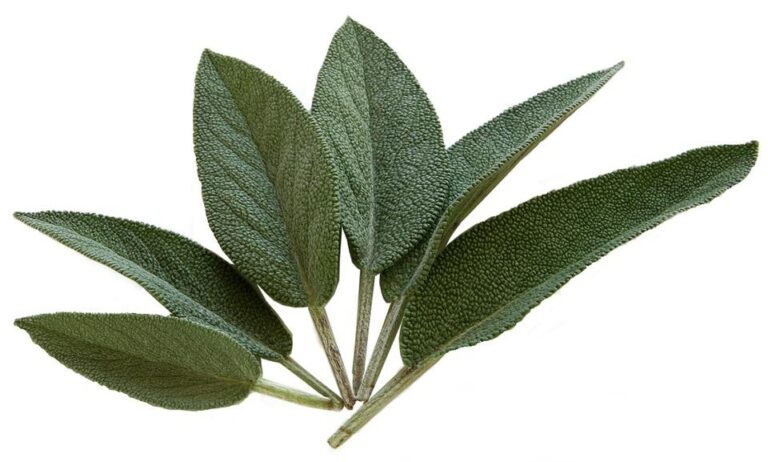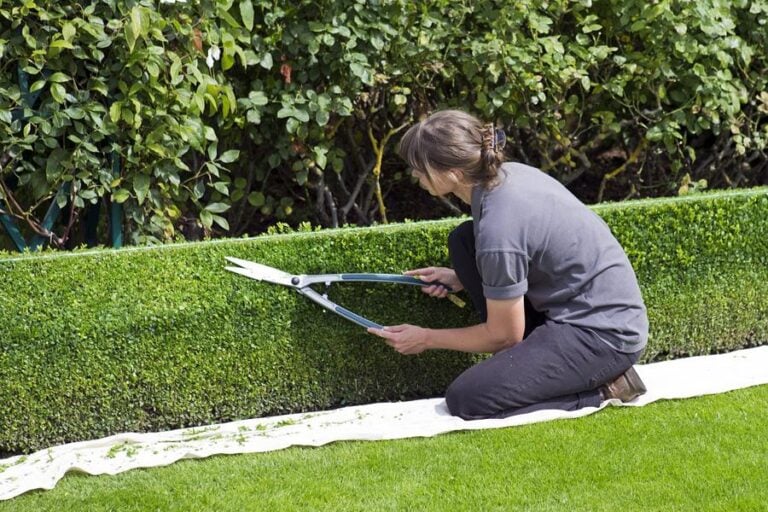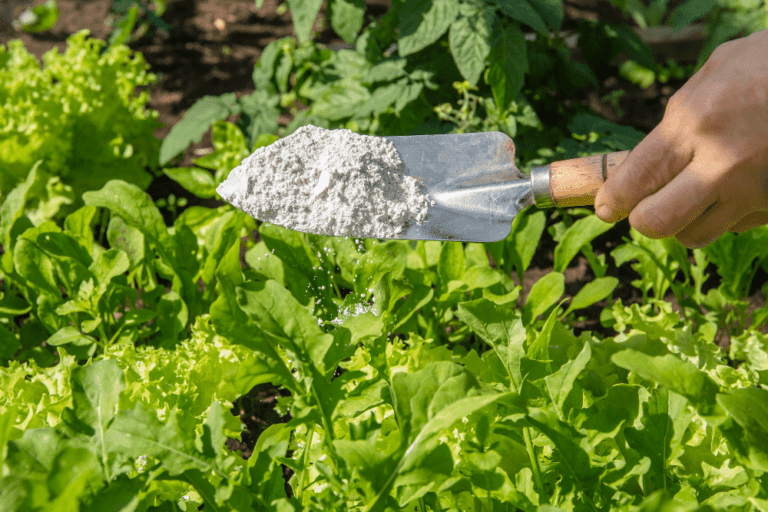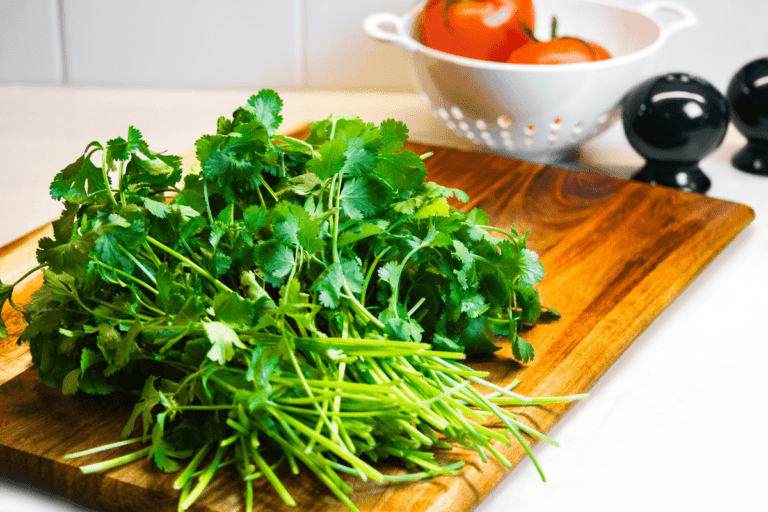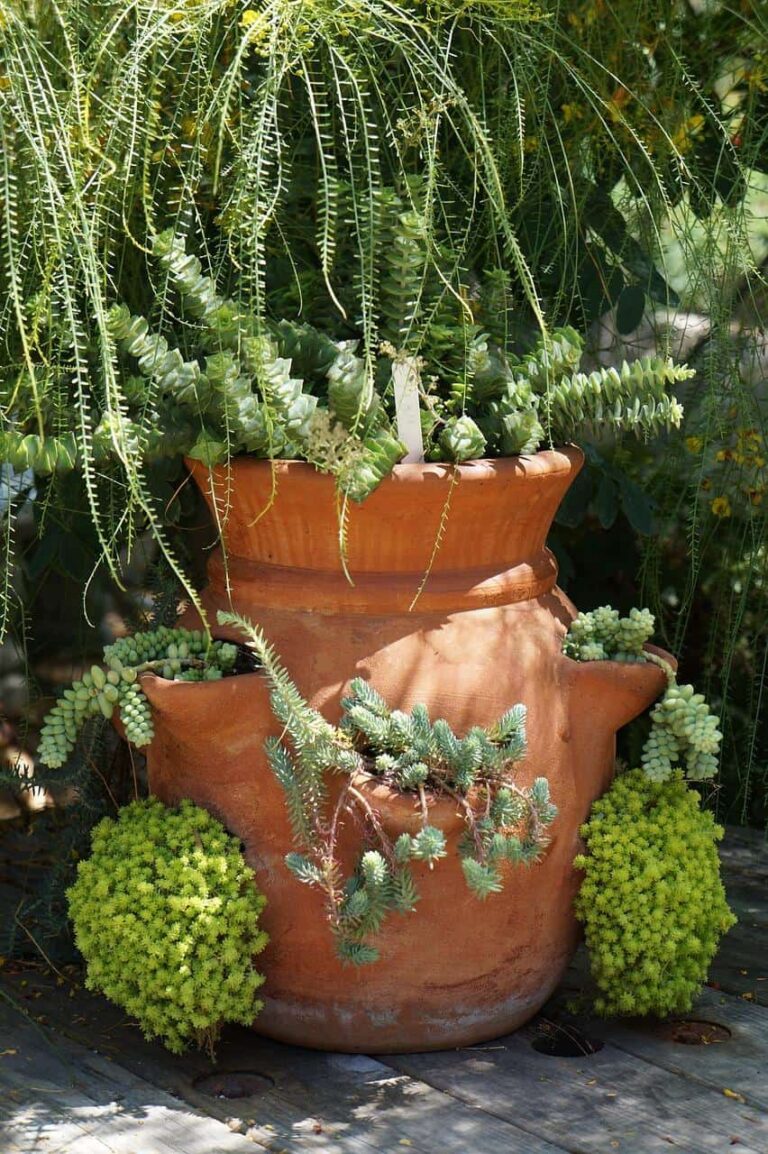Tea Garden Wonders: Uncovering the Beautiful World of Tranquil Spaces
A tea garden is a wonderful addition to any landscape, providing both a soothing aesthetic and an opportunity to grow fresh herbs and plants for delicious homemade teas. Cultivating a tea garden allows you to explore the vast world of flavorful, aromatic plants while fostering a deep connection with nature. It can be a relaxing and rewarding hobby for gardeners of all levels.

To create your own tea garden, the first step is choosing a location with well-drained soil and at least six hours of sunlight per day. This will ensure that the herbs and plants receive the necessary nutrients and energy to thrive. Additionally, consider selecting a mix of perennial and annual plants to provide variety throughout the seasons. Some popular tea garden plants include lemon verbena, which aids in digestion and has a citrusy flavor, and Siam Queen Thai basil, known for its licorice and lemon undertones.
Designing a tea garden doesn’t require extensive space, as many tea plants can be grown in containers, raised beds, or small garden plots. This flexibility enables you to customize your garden to your taste and available space. Ultimately, an herbal tea garden can offer numerous benefits, from promoting health and well-being to enriching your daily routine with the simple pleasure of a freshly brewed, homegrown cup of tea.
Table of Contents
Tea Garden Fundamentals
Tea gardens are becoming increasingly popular as more people enjoy the process of growing and harvesting their own tea leaves. In this section, we will discuss the fundamentals of creating a successful tea garden, including the various varieties of tea plants, the significance of Camellia sinensis, and the soil requirements for a thriving tea garden.
Varieties of Tea Plants
There are many varieties of tea plants suitable for a tea garden, each offering unique flavors and characteristics. Some popular options include:
- Mint: A well-known herb with several varieties such as peppermint and spearmint, each bringing their own distinct taste to the tea.
- Chamomile: These daisy-like flowers produce a calming, soothing herbal tea.
- Lemongrass: Known for its subtle citrus flavor, lemongrass is an excellent addition to tea blends.
- Lavender: With its beautiful purple flowers and soothing scent, lavender makes a delicious and aromatic tea.
- Rosemary: This fragrant herb adds a refreshing pine-like taste to tea blends.
It’s essential to consider the unique growing conditions and requirements for each variety when planning your tea garden.
Camellia Sinensis
Camellia sinensis is the plant from which all true tea is derived. This includes green, oolong, black, and white tea varieties. By growing Camellia sinensis in your tea garden, you can enjoy the process of harvesting and processing your own tea leaves from the very source.
There are two main varieties of Camellia sinensis to consider for your tea garden:
- Camellia sinensis var. sinensis: This variety is native to China and is more tolerant of cold temperatures. It produces smaller, more delicate leaves ideal for green and white teas.
- Camellia sinensis var. assamica: Originating from India, this variety has larger leaves and is better suited for warmer climates. It’s commonly used to produce black and oolong teas.
Soil Requirements
Ensuring your tea garden has the appropriate soil conditions is crucial for healthy plant growth. Some general soil requirements for a successful tea garden include:
- Well-draining soil: Tea plants are sensitive to overly wet conditions, so choose a location with good drainage.
- Acidic pH: Tea plants, particularly Camellia sinensis, thrive in slightly acidic soil, with a pH between 5.0 and 6.5.
- Organic matter: Enriching the soil with organic matter, such as compost or aged manure, will provide essential nutrients for your tea plants.
By carefully selecting your tea plant varieties and ensuring proper soil conditions, you can create a flourishing tea garden and enjoy the process of growing and harvesting your own tea leaves.
Designing a Tea Garden
Incorporating Various Herbs
A well-designed tea garden should include a variety of herbs to cater to different tastes and preferences. Start by planting popular herbal tea plants like mint, lemon balm, and lavender, which offer both great flavor and valuable health benefits. Consider adding rosemary and sage if you want a more herbal, savory taste, while catnip can be included as a calming and relaxing addition.
If you’re looking for a touch of sweetness, try incorporating stevia or licorice plant. For floral notes, hibiscus is a great addition to any tea garden. Remember to plant these herbs in a sunny location with well-drained soil, as most tea plants require at least six hours of sunlight per day.
Herbs to consider for your tea garden:
- Mint
- Lemon balm
- Lavender
- Rosemary
- Sage
- Catnip
Choosing Appropriate Flowers
Apart from herbs, several flowers can also lend their flavors to your tea blends. Roses are a popular choice not only for their beauty but also for their culinary uses. For example, their petals can be used to make delicate, floral teas, while rose hips are packed with Vitamin C.
When selecting flowers for your tea garden, consider those with edible petals and an appealing fragrance. Calendula, chamomile, and violet are other great choices that can enhance both the visual appeal of your garden and the taste of your herbal infusions.
Lastly, remember that incorporating flowers doesn’t mean limiting your garden only to those with edible petals. Choose a mix of flowers for visual interest, and keep in mind pollination needs, as most tea plants benefit from bees and butterflies visiting them.
Flowers to consider for your tea garden:
- Rose
- Hibiscus
- Calendula
- Chamomile
- Violet
By combining various herbs and flowers in your herbal tea garden, you can create a unique, flavorful, and visually appealing space perfect for personal use and even making special herbal tea cocktails for entertaining.
Herbal Teas and Ingredients
Herbal teas, also known as tisanes, are made from a wide variety of plants, herbs, and flowers. These herbal infusions not only offer delightful flavors but also boast numerous health benefits. Some popular herbs and ingredients include lemon verbena, bee balm, bergamot, chamomile, and mints.
Brewing Herbal Teas
To brew the perfect cup of herbal tea, follow these steps:
- Choose your desired herbs and ingredients. Consider herbal options such as lemon verbena, bee balm, tarragon, or lemongrass, which can be grown in your own tea garden.
- Use 1-2 teaspoons of dried herbs or 2-4 teaspoons of fresh herbs per cup of boiling water.
- Steep the herbs in hot water for 5-10 minutes, depending on the desired strength. Some ingredients like chamomile may require shorter steeping times, while others like bergamot may need longer.
- Strain the herbal infusion to remove the solid plant matter and enjoy your freshly brewed tisane.
Creating Unique Tea Blends
Experimenting with different combinations of herbs and ingredients can lead to unique and flavorful tea blends. Consider the following tips while creating your custom tisanes:
- Balance flavors: Combine mild herbs like roses and chamomile with stronger flavors like mint or lemon verbena.
- Add natural sweetness: Enhance your blend with naturally sweet herbs like stevia or catnip tea.
- Incorporate health benefits: Opt for ingredients high in vitamin C, like roses, or select herbs with specific wellness properties, like echinacea for immune support.
Remember, when creating your unique tea blends, it’s essential to experiment, enjoy the process, and trust your taste buds.
Growing and Harvesting Tea Garden Plants
Caring for Tea Plants
When growing a tea garden, it’s essential to take care of the plants. Most tea garden plants, including those in the mint family, require well-drained soil to thrive. It’s ideal to plant them in a raised bed for better drainage. Echinacea, Roman chamomile, holy basil, and pineapple sage are some popular tea garden plants that can grow well outside in zones 8 to 11.
To attract pollinators like bees, consider planting a variety of plants with different flower shapes and colors that bloom throughout the season. This will ensure better quality yield and a diverse range of flavors for your herbal tea blends.
Some tea garden plants require specific care:
- Mint family: Start seeds indoors and place outside after the last frost. Mint will spread, so plant it near a barrier, such as a sidewalk, or grow it in a container. Pick leaves often to promote growth and keep the plant bushy (source).
- Roman Chamomile: This plant requires full sun to partial shade and prefers well-drained, moderately fertile soil.
- Holy Basil: Also known as Tulsi, this plant thrives in warm, sunny conditions with well-draining, nutrient-rich soil.
- Pineapple Sage: This plant needs ample sunlight and well-drained soil. It can tolerate some drought but gives a better yield with regular watering.
- Rhubarb: Rhubarb is a sun-loving perennial that grows best in fertile, well-drained soil. Avoid harvesting it in the first year to let the roots establish.
Harvesting Techniques
When it’s time to harvest the plants for your tea garden, follow these techniques:
- Pick leaves during the morning: Harvest tea plants in the morning after the dew has dried, ideally on a dry, sunny day.
- Choose mature leaves: Pick mature leaves and flowers for better flavor and aroma. Avoid damaged or discolored parts.
- Be gentle: Handle the plants delicately to avoid bruising and maintain the essential oils in the leaves.
- Wash and dry: Rinse the harvest under a tap and gently dry the herbs and flowers using paper towels (source).
- Air dry or use fresh: For most plants, you can either air dry the leaves and flowers or use them fresh to create your herbal tea blends.
Finally, enjoy the delicious flavors and unique properties of homemade teas from your very own tea garden.
Tea Garden for Ailments and Healing
Herbal teas have been a popular choice for centuries, mainly attributed to their various health benefits. By growing a tea garden for ailments and healing, you can have fresh and beneficial herbs to make your own tea blends that cater to specific needs.
Beneficial Herbs for Health
Chamomile is widely known for its calming effect, making it an excellent choice to help improve mood and promote relaxation. This herb also offers healing benefits, such as aiding digestion and soothing stomach cramps. Chamomile is a popular herb for tea, and can be easily grown in a tea garden.
Lavender is another herb that can significantly improve mood by reducing anxiety and stress. The flowers of lavender can be brewed to make a delicious tea that also aids in sleep and relaxation.
Lemon Balm is effective for both improving mood and offering some healing benefits. It can help relieve stress, anxiety, and is known for its potential antidepressant properties. Lemon Balm tea is also useful for improving digestion.
Rose Hips are packed with Vitamin C, which helps with strengthening the immune system, and are the fruit of the rose plant. They can be used to make a rose hip tea that has a tart, fruity flavor. This tea also contains calcium and zinc, making it highly nutritious.
Mint is recognized for its refreshing taste, and ability to help treat digestive ailments such as bloating, gas, and stomach cramps. Peppermint, in particular, has a soothing effect and can help to relieve headaches and ease tension.
Ginger can be beneficial in providing relief from nausea, motion sickness, as well as digestive issues. Growing ginger in a tea garden ensures a steady supply of fresh ginger to brew healing teas.
In conclusion, a tea garden for ailments and healing allows you to have access to a variety of herbs that offer both mood-enhancing and healing benefits. With these beneficial herbs, you can cater to your specific needs while enjoying a refreshing and delicious cup of herbal tea.
Entertaining in a Tea Garden
Afternoon Tea and Herbal Mocktails
A tea garden provides the perfect setting to host a delightful afternoon tea with family and friends. Fresh scones, pastries, finger sandwiches, and a variety of teas can make your gathering feel special and elegant. To elevate the experience, consider offering a few glasses of champagne or sparkling wine. Champagne pairs well with afternoon tea, making it an excellent option for guests seeking extra celebration.
In addition to traditional teas, provide herbal mocktails made from ingredients found in your tea garden. Incorporate flavors like peppermint, apple mint, pineapple mint, and German chamomile, which add both freshness and fragrance to your drinks. For an extra touch of beauty, garnish your mocktails with English lavender or jasmine flowers, making them as visually appealing as they are delicious.
Creating a Relaxing Atmosphere
To create a relaxing atmosphere for your garden tea party, focus on incorporating elements of nature and comfort. Arrange seating within the garden, so guests can enjoy views of lush greenery and a well-kept vegetable garden. Throwing in some comfy cushions and throws will make the overall experience cozy and inviting.
Cooking and serving dishes made with fresh ingredients from your garden is another way to enhance the atmosphere. Incorporate herbs and vegetables from your garden into your recipes, such as aromatic rosemary, basil, and thyme, adding depth of flavor and showcasing your culinary prowess.
Setting the table with beautifully designed tableware will also make a lasting impression on your guests. For an additional touch of elegance, enlist the help of a pastry chef to handcraft intricate, delicious desserts that will truly “wow” your guests.
Remember, when entertaining in a tea garden, the key is to create a welcoming and enjoyable environment, allowing guests to relax and enjoy each other’s company while relishing in the beauty of their surroundings.
Tea Gardens Around the World
Tea gardens are beautiful destinations for relaxation and indulgence in different cultures worldwide. They often offer scenic settings and serve a variety of teas accompanied by delicious treats such as pastries, finger sandwiches, macarons, and more. In this section, we will explore some popular tea garden locations globally.
Popular Tea Garden Locations
London: The city of London boasts a rich tea culture with numerous elegant tea gardens and salons. One of the most famous establishments is Fortnum & Mason’s Diamond Jubilee Tea Salon, where visitors can enjoy a traditional afternoon tea with delights such as finger sandwiches, pastries, and strawberry jam, along with a fine selection of green teas and other blends. The experience often includes a live pianist, creating an exquisite atmosphere.
Darjeeling, India: Known for its light, fragrant, and rich tea, Darjeeling attracts tea lovers from around the world. The hilltop town is surrounded by tea gardens where travelers can sample some of the finest tea varieties produced there since the mid-1800s.
Kericho, Kenya: Kenya’s climate, characterized by almost daily rainfall, is highly favorable for tea cultivation. The tea plantations in Kericho have been grown on virgin rainforest areas, and the region is renowned for its excellent tea quality.
Sylhet, Bangladesh: The Lakkatura Tea Garden in Sylhet is one of the largest in the country, covering 3,200 acres. Established in 1875, it produces an astonishing 550 tons of tea per year, making it a noteworthy destination for tea enthusiasts.
Gorreana Tea Plantation, Portugal: This European tea plantation offers visitors the opportunity to enjoy a cup of tea in a scenic, Japanese-style garden complete with azalea-covered waterfalls, lanterns, statues, and wisteria blooms. The Gorreana Tea Plantation features a Tea House where guests can savor popular Japanese refreshments alongside their tea selection.
Botanical Garden Tea Gardens: Many botanical gardens worldwide feature tea gardens as part of their landscape. Visitors can wander through stunning plant collections, marvel at King Charles-era garden designs, and then relax with a refreshing cup of tea in a serene setting.
Whether you are an avid tea lover or just exploring new experiences, these popular tea garden destinations offer a unique blend of cultural, historical, and taste sensations. If you’re interested in reading more gardening posts, we have plenty for you to choose from here.

